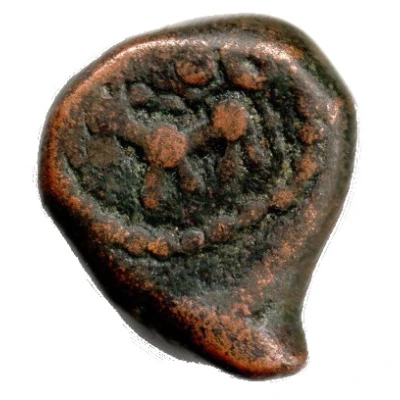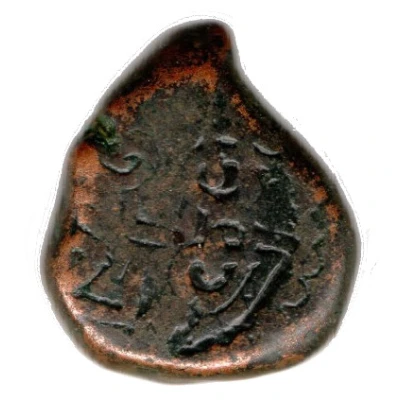


Copper kasu ND
| Copper | 3.20 g | 15 mm |
| Issuer | Princely state of Ramanathapuram (Indian princely states) |
|---|---|
| Type | Standard circulation coin |
| Years | 1800-1900 |
| Composition | Copper |
| Weight | 3.20 g |
| Diameter | 15 mm |
| Thickness | 6 mm |
| Shape | Irregular |
| Orientation | Coin alignment ↑↓ |
| Demonetized | Yes |
| Updated | 2024-10-05 |
| Numista | N#218535 |
|---|---|
| Rarity index | 91% |
Reverse
Tamil letters depicting 'சேதுபதி' 'Sethupathi' with dotted circles.
Lettering: சேதுபதி
Translation: Pronounced se-tu-pa-ti
Edge
Plain
Comment
Sethupathis were a ruling dynasty that controlled the areas of Ramanathapuram (including Rameshwaram), a district in Tamilnadu, India. The coin depicts the name of the dynasty, not the king who ruled the city of Ramanathapuram. These coins don't have dates but were minted from the 17th century to the mid 19th century when the British made them a Zamindar.Interesting fact
One interesting fact about the Copper kasu ND (1800-1900) from Princely state of Ramanathapuram is that it was one of the first coins to feature the image of a local ruler, the Raja of Ramanathapuram, on one side, and the British East India Company's insignia on the other. This coin was minted during the reign of Raja Sree Moolam Thirunal (1800-1805) and was used as a medium of exchange in the princely state of Ramanathapuram, which was a vassal state of the British East India Company. The coin's design was a symbol of the political and economic relationship between the princely state and the British colonial powers.